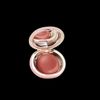If your eyes are red and puffy, cooling and hydrating the area can help. Easy at-home methods include tea bags, a facial roller, or a cool washcloth.
Whether you’re going through a tough breakup or have another difficult situation that’s bringing you down, crying is a part of life. It’s an emotional response that appears to be unique to humans. It may have even developed to help with survival.
Still, the puffy, red eyes you get after a crying session don’t have to bring your mood down any further. Keep reading to learn how you can quickly ease your symptoms using things you may already have around your home.
You might associate tears with major moments of sadness or joy. While tears help us process our emotions, it turns out they do a lot more than that, too.
There are three types of tears:
- Basal tears keep your eyes lubricated and protected at all times.
- Reflex tears show up quickly and in large quantities to wash away irritants, like when you’re cutting an onion. They may even have extra infection-fighting powers.
- Emotional tears happen in response to strong feelings, like overwhelming happiness or sadness.
Emotional tears, like the ones that happen when you cry, may have evolved to help us relate to one another. For example, tears could act as a signal that someone needs help. They may also contain hormones that are involved with stress relief.
While researchers are still working to understand why we cry, there are plenty of ways to soothe your eyes when it happens.
When you cry, fluid gathers under the eyelids and around the eye area. Reducing the swelling is all about cooling and moving the fluid away from the eyes.
1. Apply a cool compress
A cool compress can help reduce swelling. Simply grab a clean washcloth and wet it with cool water. Sit up in bed or in a comfortable chair. Hold the cool washcloth to the skin under and around your eyes for a few minutes.
If you’re using a frozen cold compress, make sure to wrap it in a clean, dry towel. Never apply ice directly to your skin.

Curad Ironman Hot or Cold Compress

Thrive Gel Ice Cold Compress Pack
2. Apply cucumber slices or tea bags
Cucumber slices can also help soothe puffy eyes and reduce swelling. Take a cucumber from your fridge, give it a wash, and cut off two 1/4-inch slices. You can save the rest of the cucumber for snacking. Lie back and keep the slices on your eyelids until they’re no longer cool.
Tea bags combine a cool compress with de-puffing caffeine. Most varieties of black, green, and white tea contain caffeine. There’s some evidence that it can penetrate the skin, reduce swelling, and increase circulation.
To try this method, wet two tea bags, refrigerate them for 20 minutes, and then place them on your eyes for 15 to 30 minutes.

The Republic of Tea Decaf People's Green Tea Bags

Mario Badescu Facial Spray with Aloe, Cucumber, and Green Tea
3. Gently tap or massage the area to stimulate blood flow
You can work to increase blood flow to the affected area by gently tapping or massaging around your eyes. The pressure from your fingers may help move fluid away.
Use the soft pads of your fingertips to make tapping or sweeping motions around the contours above and below your eyes. The skin in your eye area is delicate, so be extra gentle and avoid dragging or pulling. You can try using a gentle eye cream to help your fingers glide over your skin.
You can try this for several minutes. But if you notice any pain or irritation, stop right away.
4. Apply witch hazel
You may have witch hazel hanging around in your medicine cabinet. This astringent can help with inflammation and redness, making it a good choice to treat puffiness. But it’s best to avoid getting the liquid directly in your sensitive eye area.
To use, lightly wet a cotton pad — you do not want it to drip — then press the pad gently onto your upper cheek, away from the lower eyelid.
Take a second to read the product label first to check if it’s safe to use near your eyes.

Dickinson's Enhanced Witch Hazel Hydrating Toner with Rosewater

Thayers Rose Petal Facial Toner with Witch Hazel
5. Use a facial massage tool
Items like facial rollers and gua sha tools can help you massage your skin. They’re often used with a facial oil or serum to glide over your face.
Some say they can help with circulation or help your skin care product absorb. And tools that feel cool to the touch might help with puffiness.
If you happen to have a roll-on eye serum in your skin care stash, now might be a good time to give it a try. The cool metal ball can feel soothing when it’s swept over your undereye area.
Always use a light touch when applying a massage tool to your eye area, and stop if you notice pain or irritation.
6. Apply a chilled cream or serum
Again, cooling down the eye area can help reduce puffiness. Try chilling your favorite face cream or other products, such as eye cream, before applying. But remember, keep products that are not eye-safe away from your direct eye area.

Aspen Green Relief Cooling Cream

Biossance Squalane + Probiotic Gel Moisturizer
The redness you experience after a good cry comes from the blood vessels in your eyes. Constricting the vessels and adding soothing moisture to your eye can help ease the redness. You can also use makeup to create a similar effect.
7. Use eye drops
Eye drops can be used to help with dryness and irritation. Other varieties are intended to reduce redness that you experience with crying or allergies.
To avoid causing more irritation, use eye drops only as directed on the label. Using them too often can make your symptoms worse.
Also, many formulas are not recommended for people who wear contact lenses. Read labels carefully and be prepared to take out your lenses before using eye drops.

Systane Ultra Lubricant Eye Drops

Visine Allergy Eye Relief Multi-Action Antihistamine & Redness Reliever Eye Drops
8. Add some eyeliner
If your eyes are not too sore for eyeliner, you can try adding some to enhance the whites of your eyes.
A “tightline” is a technique that’s similar to tracing the waterline. It’s sometimes called “invisible eyeliner” because it simulates the natural area of darkness in your lash line.
Gently wiggle your liner of choice along your upper lash line. You may need to do a “dot-dash” to get the whole way across, and then softly blend the line.
This look can help your eyes appear brighter. But consider keeping makeup away from your lashes and waterline if your eyes are feeling extra irritated.
9. Apply color-correcting concealer
The skin under your eyes can look darker after crying. You may also have redness around your nose or other spots on your face. A good concealer can help mask these telltale signs and give you a refreshed look.
You can also consider using a green concealer to help neutralize redness. Green is the opposite of red on the color wheel, leading the two colors to cancel out. You can apply concealer to affected areas and blend well using your fingers, a brush, or a sponge.

The Ordinary Concealer

W3ll People Bio-Correct Multi-Action Concealer
10. Enhance with color elsewhere
Adding color to other areas of your face may distract from redness around your eyes and nose. For example, you can apply blush to your cheeks and add your favorite lip color.
This can help you to look livelier and draw attention to other parts of your face.

Rare Beauty Stay Vulnerable Melting Blush

MOB Beauty cream clay blush
Along with puffiness and redness, your eyes may feel dry after crying. Not only that, but your whole face — especially the skin under and around your eyes — may also feel dry. Rehydrating your body and your skin should help bring back moisture.
11. Drink water
Grab a tall glass of water and keep drinking. Water infuses your whole body with hydration. Although you may have heard that you should drink eight glasses of water per day, the Centers for Disease Control and Prevention (CDC) says there’s no exact recommended amount for U.S. adults today.
The amount of water you need depends on your age and other health factors. You can also get some of your hydration from other foods and drinks you consume. But as the CDC explains, drinking water is a great way to protect your health.
If you don’t like plain water, you might try squeezing in a bit of lemon. You can also use slices of cucumber or your favorite fruit to flavor your water.

Liquid I.V. Hydration Multiplier

Nuun Sport Hydration
12. Cleanse your skin
Although tears are not bad for your skin, over time, they have the potential to cause dryness. Rinsing them away with cold water can help. Use a soft towel to gently pat your skin dry.
When needed, you can also use a face wash. The American Academy of Dermatology (AAD) recommends using an alcohol-free cleanser that is free from physical exfoliants.
But keep in mind that washing your face more than twice per day may actually make dryness and other skin problems worse in the long run.

Clinique All About Clean Liquid Facial Soap

La Roche-Posay Lipikar AP+ Moisturizing Body and Face Wash
13. Apply a moisturizer
Your skin may feel dry and itchy after crying. To help your skin recover, the AAD says that this is the right time to reach for your moisturizer.
Once you’ve finished cleansing your skin, apply a moisturizer right away. Doing so will help further lock in moisture. Read the product label before getting any products too close to the direct eye area, and be extra gentle when touching the skin around your eyes.

CeraVe Moisturizing Cream

Kiehl's Age Defender Moisturizer
These methods should help ease your symptoms after a good cry. They may help you feel a bit better, too. Caring for yourself is important in times of sadness or stress. Take time for self-care each day, even if it’s only for a few minutes.
Better yet, talk out your thoughts or just unwind with a trusted friend or family member. A licensed therapist is another good option.
If you’re feeling concerned about how you’re coping, talk with a doctor. They can help connect you with resources or diagnose any underlying conditions that could be affecting your mood. Just remember that you don’t have to go through whatever you’re facing alone.
